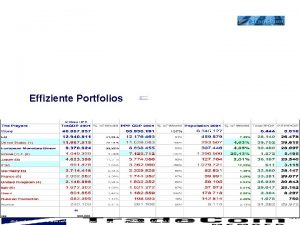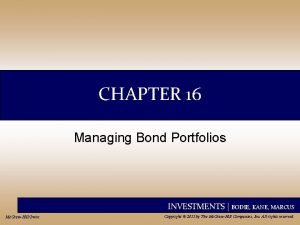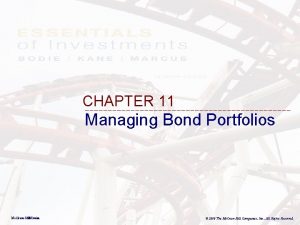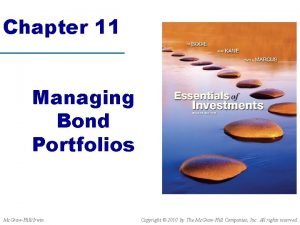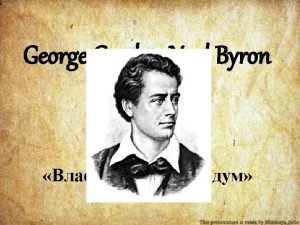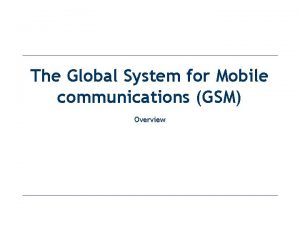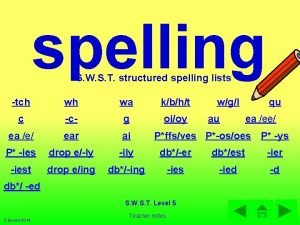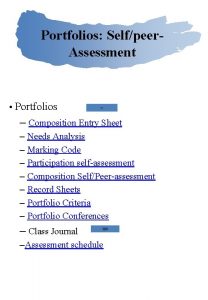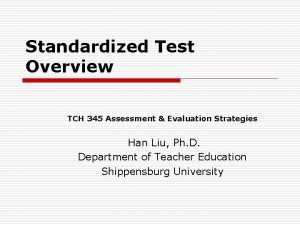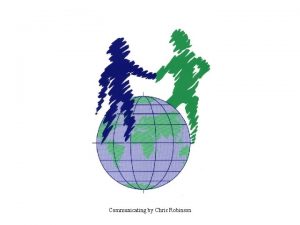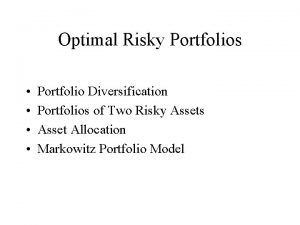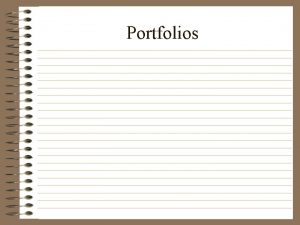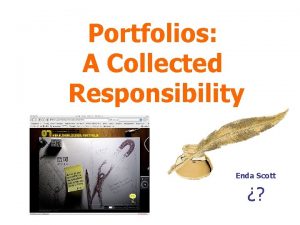Chapter 12 Communicating with Portfolios TCH 345 Assessment









- Slides: 9

Chapter 12 Communicating with Portfolios TCH 345 Assessment & Evaluation Department of Teacher Education Shippensburg University Han Liu, Ph. D.

What is Portfolio? Portfolio is a collection of student work assembled to provide a representation of student achievement. n Portfolio is a story told by the learner with a "movie", not merely with words and pictures. n Portfolio is a collection of student work with certain purpose n

What Artifacts to Collect? n n n Writing Projects Assignments Homework Rough drafts Drawing & Sketches Notes Schedules & Plans Book lists Letters Graphs Photos n Digitized Projects Images e-Artwork Website Blog Animations Audios Videos Movie n Digital Portfolio n n n n

Four Types of Portfolio 1. Celebration Portfolio: personal collection of favorite works and special academic mementos Showcase & keepsake portfolios 1. Growth Portfolio: 2. Project Portfolio: 3. Status Report Portfolio: Revealing changes or accomplishments in a student’s academic performance over time Depiction of the completion of steps in a project conducted over time. Two criteria: correct steps, and quality of products Showing academic standards met, courses completed, requirements satisfied.

Benefits for Teachers and Students n n n Track student achievement over time to reveal improvement or the lack thereof. In this case, they can be diagnostic. Afford students an excellent context within which to take responsibility for maintaining and tracking their one files and records of achievement. This assessment for learning application teaches a critical life skill. Help students learn to reflect on and see their one improvement as achievers. This involvement has real motivational power. Provide important insights into student’s academic selfconcepts, academic interests, and sense of their own needs. Provide excellent opportunities for students to practice their reasoning proficiencies, analyze their own work, compare work over time, draw inferences about their growth or needs, and learn evaluative or critical thinking skills. Document student attainment of required district or state standards in an assessment of learning context.

Portfolios vs. Report Cards n Report card: the most efficient way to share information and not care much about details n Portfolios: seeking for details while abandoning the concern for efficiency

How to Build Portfolios? n Both teacher and student should form a habit of collecting data in all four categories on the regular basis n Make portfolio building as a course requirement n Establish Teacher and Student Partnership to collect and aggregate data for certain purposes

Criteria for Student Reflection Coverage n Accuracy n Specificity n Integration n Revelation n

Reflection on Portfolio n A way of developing “real-life-skills” n A tool of “Authentic Assessment” n A powerful tool for motivation n A accurate mirror to see self n


